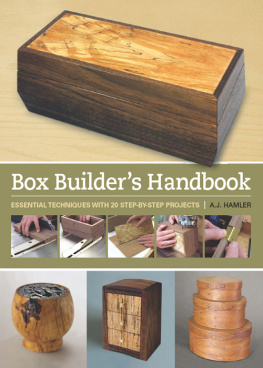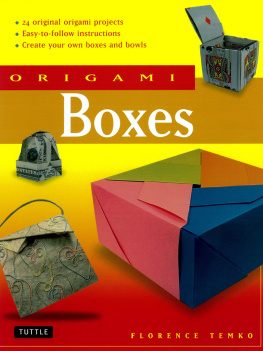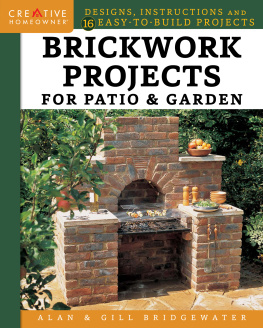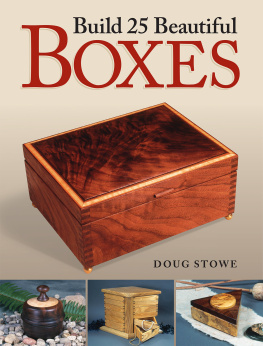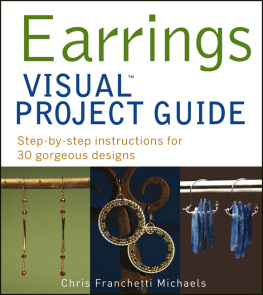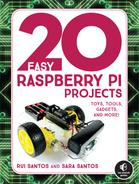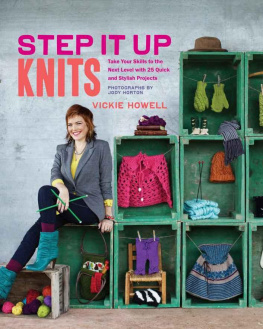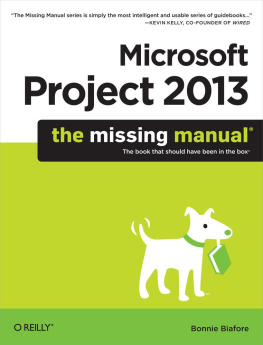A.J. HAMLER
READ THIS IMPORTANT SAFETY NOTICE
To prevent accidents, keep safety in mind while you work. Use the safety guards installed on power equipment; they are for your protection.
When working on power equipment, keep fingers away from saw blades, wear safety goggles to prevent injuries from flying wood chips and sawdust, wear hearing protection and consider installing a dust vacuum to reduce the amount of airborne sawdust in your woodshop.
Dont wear loose clothing, such as neckties or shirts with loose sleeves, or jewelry, such as rings, necklaces or bracelets, when working on power equipment. Tie back long hair to prevent it from getting caught in your equipment.
People who are sensitive to certain chemicals should check the chemical content of any product before using it.
Due to the variability of local conditions, construction materials, skill levels, etc., neither the author nor Popular Woodworking Books assumes any responsibility for any accidents, injuries, damages or other losses incurred resulting from the material presented in this book.
The authors and editors who compiled this book have tried to make the contents as accurate and correct as possible. Plans, illustrations, photographs and text have been carefully checked. All instructions, plans and projects should be carefully read, studied and understood before beginning construction.
Prices listed for supplies and equipment were current at the time of publication and are subject to change.
METRIC CONVERSION CHART

Box Builders Handbook. Copyright 2011 by A.J. Hamler. Printed and bound in China. All rights reserved. No part of this book may be reproduced in any form or by any electronic or mechanical means including information storage and retrieval systems without permission in writing from the publisher, except by a reviewer, who may quote brief passages in a review. Published by Popular Woodworking Books, an imprint of F+W Media, Inc., 10150 Carver Rd., Blue Ash, Ohio 45242. (800) 289-0963 First edition.
Distributed in Canada by Fraser Direct
100 Armstrong Avenue
Georgetown, Ontario L7G 5S4
Canada
Distributed in the U.K. and Europe by F&W Media International LTD
Brunel House, Ford Close
Newton Abbot
TQ12 4PU, UK
Tel: (+44) 1626 323200
Fax: (+44) 1626 323319
E-mail:
Distributed in Australia by Capricorn Link
P.O. Box 704
Windsor, NSW 2756
Australia
 | Visit our Web site at www.popularwoodworking.com.
Other fine Popular Woodworking Books are available from your local bookstore or direct from the publisher. |
15 14 13 12 11 5 4 3 2 1
ACQUISITIONS EDITOR: David Thiel
DESIGNER: Brian Roeth
PRODUCTION COORDINATOR: Mark Griffin
PHOTOGRAPHER: A.J. Hamler
ILLUSTRATOR: Jim Stack
ABOUT THE AUTHOR

A.J. Hamler is the former editor of Woodshop News and was the founding editor of Woodcraft Magazine. As a freelance writer, A.J.s woodworking articles have appeared in most of the publications in the field and he served as Senior Editor for The Collins Complete Woodworker for HarperCollins/Smithsonian. His most recent book is Easy to Build Birdhouses from Popular Woodworking Books. When not in his workshop, his other interests include science fiction (writing as A.J. Austin, hes published two novels and numerous short stories), gourmet cooking and Civil War reenactments.
DEDICATION
To Courtney, for whom Ive made boxes
since the day she was born.
INTRODUCTION
BOXES, OF ONE KIND OR ANOTHER, HAVE been with humans since forever. Our first were boxes of diapers and infant formula. For our earlier Christmases and birthdays, we were often more fascinated by the box a present came in than the gift itself. A little bit older, and we caught frogs or other small animals and kept them in a cardboard box. As we aged, boxes stayed with us.
Any sports fan reading this is well familiar with box scores and the batters box, nobody likes to be boxed in, everyone likes to be complimented for thinking outside the box, and who wouldnt want the best seat in the house a box seat. A few have negative connotations (penalty box, Pandoras box, poor box), but by and large boxes are positive things. Its even been said that life is like a box of chocolates.
Its no mystery that boxes are among the most popular of woodworking projects, and for good reason: They can be designed and used for almost any purpose. Because they use smaller amounts of material, theyre economical. Their usually smaller size means that they dont dominate a small workshop, or demand a lot of time. They make perfect gifts.
My goal with the Box Builders Handbook is to present a collection of projects representing a variety of box styles and their associated techniques, and not to teach you how to become a woodworker. But the fact is that boxes are the perfect projects for doing exactly that. Just about all the techniques required for furniture and other larger, more-involved projects can readily be practiced and mastered building boxes.
As you look over the projects in this book, youll note that its not intended to serve as an introduction to basic woodworking techniques and tool usage; Ill assume throughout the book that you already have a general understanding of each. But before you get started I wanted to familiarize you with some of the more common methods, materials and tips that youll use repeatedly.
Joinery
You can use any kind of joinery with boxes, from simple butt joints to intricately cut and fitted dovetails, and plenty in between. This is the perfect time to get up on my soapbox (pun intended) to speak out against one of the more prominent woodworking myths. Chances are good that youve been told repeatedly that butt joints are the weakest of joints and I wont argue that; they are. However, joinery has to be looked at in context other joinery such as dovetails and mortise-and-tenon are truly strong joints, but you have to consider just how much strength you need.
Sure, you cant really build a very strong table or chair with just butt joints because of the stresses to which theyre subjected during use. However, the typical use of boxes involves very little stress to the joinery. Further, wood endgrain always visible in butt joinery can often be attractive, especially for some of the more exotic wood species. For that reason, dont be afraid of using butt joints, especially as you practice your skills.
Miter joints are a type of butt joint youll encounter often in box making, and although not the strongest of joints theyre generally plenty strong for boxes as long as you cut them accurately. I recommend ignoring whatever built-in miter scale your saw has and measure miter angles directly on the blade. You can accomplish this with an ordinary protractor, but I rely heavily on a digital angle guide (photo, top left, below). With your blade set exactly, youll ensure the strongest miter joints possible.

